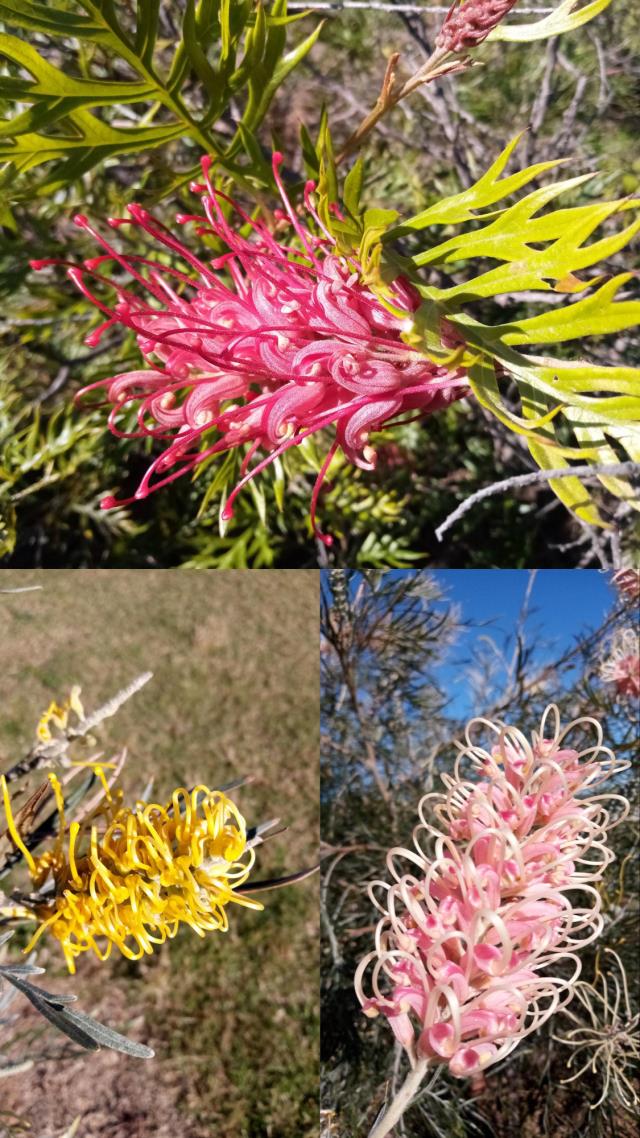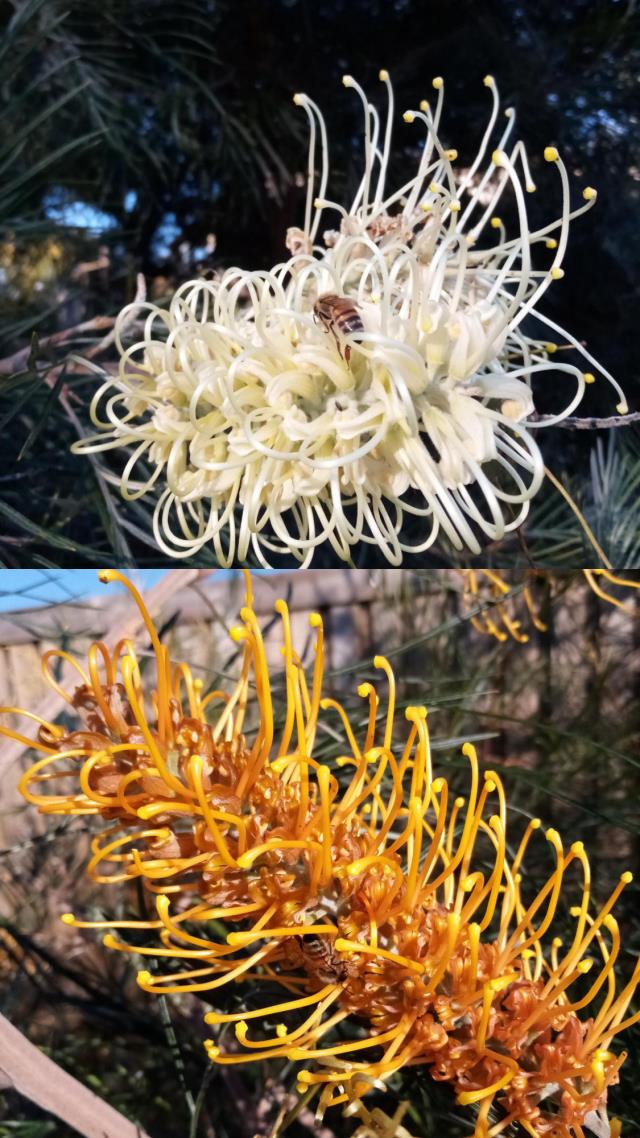By Beatrice Hawkins
At the moment in my garden I have some dwarf zinnias in flower and am very impressed with them. They are still providing a splash of colour when not much else is there. They are very different to the tall, lanky, ungainly plants I remember from childhood. I remember those growing by a fence at the side of our driveway and an uncle putting finger buns on sticks, decorated as Easter rabbits, among them as part of a treasure hunt one year. They were tall, about a metre, and scratchy and I really have never been a fan since then and don’t remember ever growing them myself until now. These however, have grown to only about 30 cm tall, spread to a clump about 45 cms in diameter and have flowered prolifically with little water and less care. I have seen many beautiful versions on the internet advertised for the cut flower trade but these dwarf forms, have won me over and will definitely be planted again next season. In fact I may even try some of the taller varieties as these were so easy and the range of colours and shapes available has almost won me over.
The seeds can be planted where you want them to grow in well drained, fertile soil in full sun but preferably where they will be protected from the wind. The seeds should be planted as soon as the risk of frost is over and they will grow and bloom through the summer and autumn until the frosts come again. They are very hardy and relatively drought tolerant so, with our limited water supply, they appear to be an ideal plant to give some colour in our gardens.
Many years ago on a property in the Warren area I planted some lobelia as a border in a garden. They were really successful and I have tried to replicate the look this year. Hopefully by spring I will have an appealing border on the garden closest to the house. The ones I grew out west were a particularly beautiful deep blue and the foliage was bronze and I alternated them with a white variety with bright lime green foliage. I haven’t been able to find the same ones but have used a punnet each of blue, red and a mixed one that includes white.. hopefully they will do well and provide an eye catching display.
Driving down East Street, I have noticed, growing along the fence that borders the new estate on western side opposite the Woolworths’ complex, a row of beautiful golden flowered grevilleas that are particularly striking. They are obviously the perfect variety and in the perfect spot, as they have really flourished in the short time they have been there and at the moment in full glorious flower. After reading about them my guess would be that they are a variety called Honey Gem that will grow to a height of about 15 feet unless kept pruned and will flower for most of the year. It is a hybrid and suitable to sub-tropical areas.
Grevilleas all over town are flowering beautifully at the moment and the range of colours is amazing. Near where I live there are some lovely cream ones, that I believe would be called “Moonlight”, in full flower and also some cream and pink bi-colours, Peaches and Cream maybe? Grevilleas are something I will definitely plant in my corner garden as an attractant for the many nectar feeding birds I’d like to enjoy in my yard.
There are over 350 species of grevillea and many are native to Australia. There seems to be a size and colour for every situation and every climate. They range from ground covers to shrubs about 1 metre high right on up to about 5 metres. Colours range from creamy white through the whole range of orange and amber shades up to bright yellow and likewise from pale pinks through mauves to deep magenta. There also seems to be a variety that will be in flower at any time of the year. They grow in every region from the tropical north to the snowy mountain areas where they will survive through the winter covered in snow. It seems that regardless of the climate, soil type, size or colour you would like, with research, you would be able to find a grevillea to fulfil your requirements.
Our beautiful native plants are spectacular and gaining an increasing following around the world for use in floral arrangements. At the moment I am receiving emails from nurseries and garden gurus in America promoting them as the shrub to plant in their spring.
As the frosts arrive I read a few hints to protect our plants and one that surprised me was to water well in the middle of the day. The idea is that moist soil has an insulating effect and heat will radiate through the night. Bringing potted plants inside is an obvious hint. Mulching is another idea and works well in keeping plants warm. A simple cloche made by cutting the base off a drink/milk bottle will work for protecting individual plants. Last year I purchased some commercial “frost cloth” and made a tent and successfully protected some tomato plants.
Don’t forget the “Garden Extravaganza” in St Mary’s Hall during Jumpers and Jazz in July.
*This is an old article that has been digitised so our readers have full access to our catalogue.








